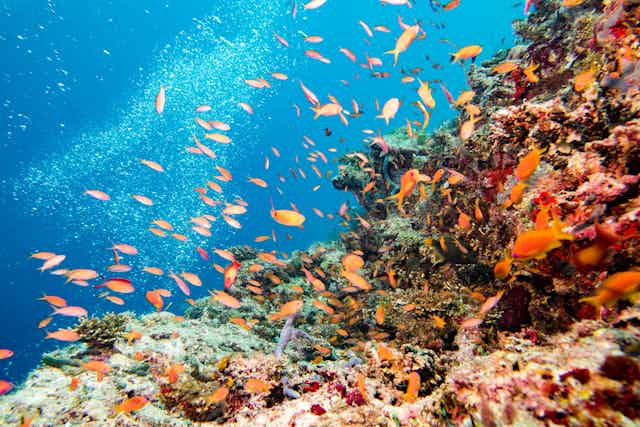The Great Barrier Reef has been in the spotlight thanks to severe coral bleaching since March, leaving only 7% of the reef untouched. The bleaching, driven by record-breaking sea temperatures, has been linked to human-caused climate change.
Apart from bleaching, the reef is in serious trouble thanks to a variety of threats. Many species and ecosystems of the Great Barrier Reef are in serious decline.
It is now overwhelmingly clear that we need to fix these problems to give the reef the best chance in a warming world. In fact, the upcoming election is arguably our last chance to put in place a plan that will save the reef.
In a recent paper, we estimate that we need to spend A$10 billion over the next ten years - about five times as much as current state and federal governments are spending – to fix up reef water quality before climate change impacts overwhelm it.
Stop water pollution
Poor water quality is one of the major threats to the Great Barrier Reef. Sediment and nutrients (such as nitrogen) washed by rivers onto the reef cause waters to become turbid, shutting out light for corals and seagrass. It can also encourage algal growth and outbreaks of coral-eating crown-of-thorns starfish.
The Queensland and Australian governments have made plans with targets to improve water quality, but the main plan - the Reef 2050 Long Term Sustainability Plan – is completely inadequate according to the Australian Academy of Science. Its targets are unlikely to be met. And others have suggested ways to improve water quality on the Great Barrier Reef.
To provide resilience for the Great Barrier Reef against the current and rapidly increasing climate impacts, water quality management needs to be greatly improved by 2025 to meet the targets and guidelines. 2025 is important as it’s likely that climate change effects will be overwhelming after that date. It is also the target date for the Reef 2050 Long Term Sustainability Plan.
What needs to be done

In our recent article, we analysed what we need to do to respond to the current crisis, especially for water quality.
Refocus management to the “Greater Great Barrier Reef (GBR)” – that is, include management of Torres Strait, Hervey Bay and river catchments that run into the reef as priorities along with the world heritage area. This area is shown in figure above.
Prioritise management for ecosystems in relatively good condition, such Torres Strait, northern Cape York and Hervey Bay which have the highest current integrity. These areas should still be prioritised despite the recent severe bleaching in the northern Great Barrier Reef.
Investigate methods of cross-boundary management to achieve simultaneous cost-effective terrestrial, freshwater and marine ecosystem protection in the Greater GBR.
Develop a detailed, comprehensive, costed water quality management plan for the Greater GBR. In the period 2009-16, more than A$500 million was spent on water quality management (with some success) without a robust comprehensive plan to ensure the most effective use of the funding.
Use existing federal legislation (the Great Barrier Reef Marine Park Act and the Environment Protection and Biodiversity Conservation Act) to regulate catchment activities that lead to damage to the Greater GBR, together with the relevant Queensland legislation. These rules were established long ago and are immediately available to tackle terrestrial pollutant discharge.
Fund catchment and coastal management to the required level to largely solve the pollution issues for the Greater GBR by 2025, to provide resilience for the system in the face of accelerating climate change impacts. The funding required is large – of the order of A$1 billion per year over the next ten years but small by comparison to the worth of the Great Barrier Reef – estimated to be of the order of A$20 billion per year.
Continue enforcement of the zoning plan.
Show commitment to protecting the Greater GBR through greenhouse gas emissions control, of a scale to be relevant to protecting the reef (for example those proposed by the Climate Change Authority), by 2025.
Unless immediate action is taken to improve water quality, the onset of accelerating climate change impacts mean there is little chance the current decline in reef health can be prevented.

